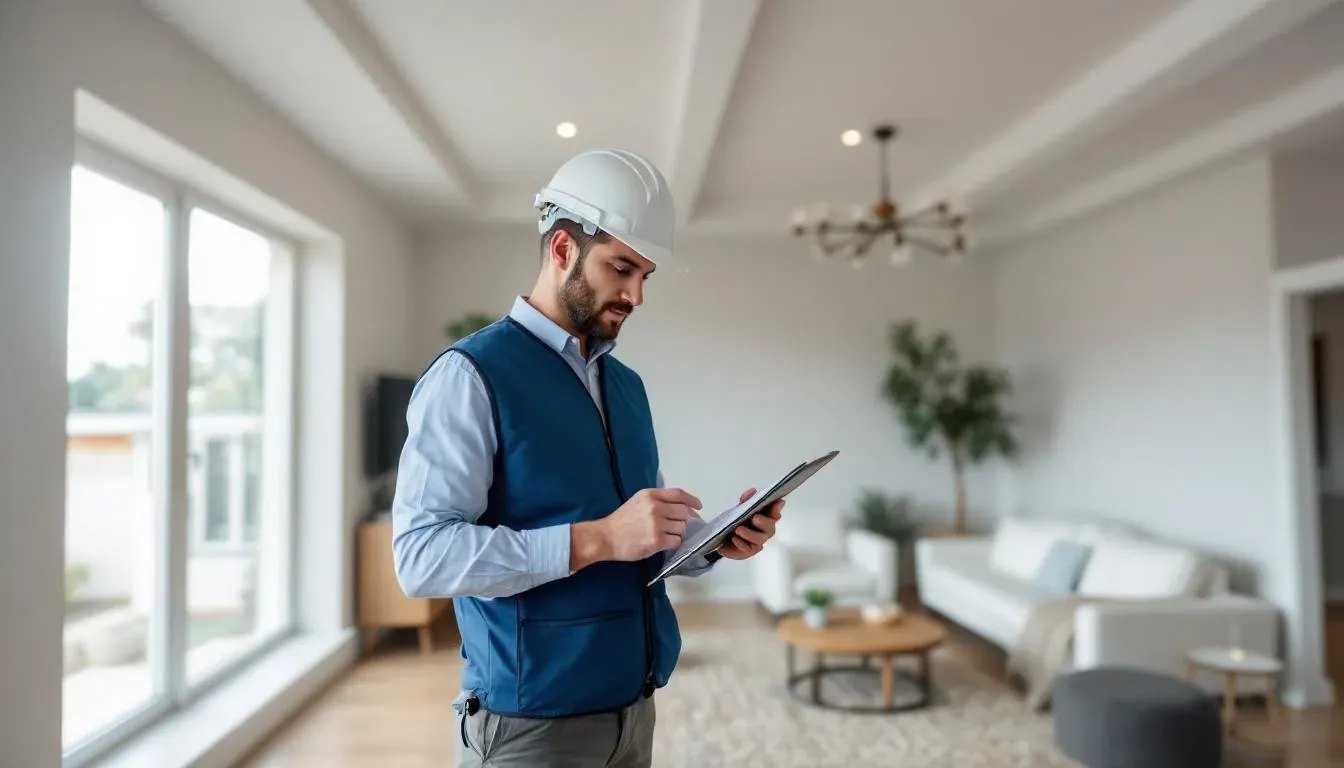Whether you’re planning to buy, sell, or refinance a home, a home appraisal will likely play a crucial role in the process. Understanding the value of a property is essential before making any significant financial decisions.
With the right information, you can approach the home appraisal process confidently. This guide will explain what a home appraisal is, how it works, and what you can expect in terms of home appraisal cost.
Home appraisals are often major stumbling blocks for those looking to refinance their homes. Often, appraisals come back too, low enough not to support the new loan. Low appraisals are becoming a bigger problem for many would-be buyers and refinancers as home values have stabilized and appreciated in most markets. Appraisals are based on recent sales prices of comparable properties. And in rising price markets, those sales prices might not be high enough to support the newest deals.

A home appraisal is a professional process conducted by a licensed appraiser to determine the fair market value of a property. This detailed report provides an unbiased estimate of a home's worth based on a thorough evaluation of the property’s condition, location, and recent sales of comparable homes in the area.
Home appraisals are a critical part of the home buying process and the home loan process, especially when mortgage lenders require assurance that the appraised value supports the agreed-upon purchase price or the amount being refinanced. Whether you are purchasing a new home, refinancing an existing mortgage, or applying for a home equity loan, a professional appraiser will examine various property details to produce a comprehensive home appraisal report.
This report includes an analysis of the home's square footage, overall condition, upgrades or home improvements, and the comparable sales or comparable homes nearby that help establish the market value. The appraiser also considers market trends and market conditions to ensure the final valuation reflects the current state of the real estate market.
A home appraisal protects both buyers and mortgage lenders by preventing an appraisal gap, where the home's fair market value is lower than the asking price. This process is governed by federal regulations and standards set by the appraisal foundation to promote accuracy, fairness, and compliance with laws such as the fair housing act and the equal credit opportunity act.
Ultimately, the home appraisal process provides peace of mind by confirming that the purchase price or loan amount is justified by the property's true worth, helping to facilitate smooth and transparent real estate transactions.

If you need a mortgage to buy a home, your real estate agent will likely recommend including an appraisal contingency in the sales contract. This crucial clause protects you by allowing you to back out of the purchase if the home appraisal reveals a low appraisal value that does not support the agreed-upon purchase price. The appraisal contingency safeguards buyers from overpaying in a fluctuating housing market where property values can vary significantly.
Including an appraisal contingency is especially important when mortgage lenders require a home appraisal to confirm the appraised value aligns with the loan amount, ensuring you are not financing more than the home is worth. While this contingency is highly recommended for most buyers, it is not mandatory. Buyers paying with cash or those in a competitive seller’s market might choose to waive this protection to strengthen their offer.
For first-time homebuyers or those with tight budgets, an appraisal contingency offers peace of mind by preventing financial risk associated with an appraisal gap—a scenario where the home's fair market value falls short of the asking price. This clause also helps protect against potential appraisal bias or inaccuracies that could unfairly lower the property appraisal value.
In summary, an appraisal contingency is a vital part of the home buying process that ensures the final valuation is fair and backed by a licensed appraiser. It ultimately contributes to more transparent and secure real estate transactions while helping buyers avoid unexpected closing costs and financial pitfalls related to a low appraisal value.

An appraisal is distinct from a home inspection, which involves a far more detailed examination of a property's condition. During a home inspection, a licensed inspector thoroughly evaluates the home to identify any existing or potential issues that may require repairs or maintenance. This includes testing electrical outlets, assessing the functionality of the heating and cooling systems, inspecting the roof for proper installation and damage, and checking for safety hazards such as mold, pests, or structural weaknesses.
In contrast, a home appraiser focuses primarily on determining the fair market value of the property rather than conducting an exhaustive analysis of every defect. While the appraiser will note visible and significant defects—such as a caved-in roof, water damage, or malfunctioning plumbing—that could impact the appraisal value, their main goal is to assess the overall worth of the real property based on its condition, location, size, and comparable sales in the area. The appraiser examines how these factors, along with current market trends and market conditions, influence the final valuation reported in the home appraisal report.
Unlike a home inspector, the appraiser does not perform tests or delve into the home's mechanical systems in detail. However, if the appraiser identifies potential safety concerns or major issues that could affect the home's fair market value, they may recommend a specialized inspection to provide further insight. This distinction is important in the home buying process, as both the home inspection and the home appraisal serve complementary but different purposes—one ensuring the home's safety and functionality, the other confirming its market worth for mortgage lenders and buyers.
Understanding the difference between a home inspection and a home appraisal helps buyers and sellers navigate the real estate market confidently, ensuring that their purchase price or loan amount aligns with the true condition and value of the property. Both processes are integral to transparent and secure real estate transactions, governed by federal regulations and conducted by certified professionals committed to fairness and accuracy.
Your lender hires a licensed appraiser to serve as an impartial third party who will independently evaluate your home's fair market value. This independent assessment ensures that both you and your mortgage lender receive an unbiased, professional appraisal report that accurately reflects the property's worth.
During the home appraisal process, the appraiser examines a comprehensive set of factors, including the current condition of the home, any recent home improvements or upgrades, and the details of comparable properties (comps) in the neighborhood. The appraiser also considers the home's square footage, overall value, location, and unique features, all of which contribute to determining the final appraisal value.
Additionally, market trends and local real estate market conditions play a critical role in the appraisal process, helping to align the home's appraised value with current demand and supply dynamics. By analyzing recent sales prices of similar homes in the area, the appraiser ensures that the appraisal reflects an accurate and fair market value, which is crucial for mortgage lenders to validate the loan amount.
This thorough and regulated appraisal process complies with federal regulations and guidelines set forth by entities such as the Appraisal Foundation, ensuring transparency and fairness throughout. Whether you are in the home buying process, refinancing your mortgage, or applying for a home equity loan, a detailed and professional home appraisal report provides essential insight into your property's true market value, helping you make informed financial decisions and facilitating smooth real estate transactions.

Unlike a home inspector who meticulously searches for specific defects or safety concerns, the licensed appraiser evaluates the overall condition of the property as a key factor in determining its fair market value. This assessment includes the age of the home, total square footage, and the number of rooms, all of which influence the appraisal value. The appraiser will conduct a thorough inspection of the property’s structural elements such as the foundation, roofing, plumbing, electrical systems, and HVAC functionality to ensure there are no significant issues that could negatively impact the market value. Additionally, the quality and upkeep of landscaping, exterior finishes, lighting fixtures, and home appliances are taken into account to provide a comprehensive picture of the home’s condition. Ensuring the absence of safety hazards also plays a critical role in the home appraisal process, as these factors can affect the final valuation and the appraised value reported in the home appraisal report.
Permanent home improvements and upgrades can positively influence the appraisal value if they add to the property’s overall appeal and functionality. The appraiser will only consider renovations or additions that are fixed to the property and will remain after the homeowner moves, such as remodeled kitchens, updated bathrooms, finished basements, or enhanced curb appeal through landscaping. These upgrades must be documented and verifiable, as temporary or personal items do not contribute to the home’s fair market value. Improvements to spaces outside the main living areas, such as a renovated garage, a finished basement, or a professionally landscaped pool area, are also factored into the appraisal. Providing detailed records, including receipts and before-and-after photos, can help the appraiser accurately capture the value added by these enhancements, which may lead to a higher appraisal value and better support the purchase price or refinancing loan amount.
A critical component of the home appraisal process is the analysis of real estate comps—recently sold comparable properties in the neighborhood that serve as benchmarks for determining the subject home’s value. The licensed appraiser conducts a detailed review of these comparable sales, considering factors such as sale price, square footage, location, condition, and any unique features. By comparing your home to these similar properties, the appraiser ensures the appraisal value aligns with current market trends and reflects the fair market value of homes in the area. This comparative market analysis helps prevent an appraisal gap by validating that the purchase price is supported by objective data. After completing this research and on-site inspection, the appraiser compiles all findings into a comprehensive home appraisal report, which is then submitted to the mortgage lender to assist in the home loan process and support informed real estate transactions.
A home appraisal typically ranges from $600 to $2,000, depending on various factors such as the property's size, type, and location. Single-family home appraisals generally fall on the lower end of this spectrum, while multifamily or larger properties tend to incur higher home appraisal costs due to the increased complexity and time required for evaluation.
In most real estate transactions, especially during the home buying process, mortgage lenders mandate a professional home appraisal to ensure the appraised value supports the loan amount. While the lender orders the appraisal, it is usually the homebuyer who pays for the appraisal as part of their closing costs. However, in some cases, buyers may negotiate with the seller to cover the home appraisal cost, particularly in competitive markets or as part of the purchase agreement.
Understanding the home appraisal cost is essential for budgeting your overall home loan process and closing costs. This fee covers the services of a licensed appraiser who conducts a thorough property appraisal, including an on-site inspection and a detailed analysis of comparable properties, market conditions, and property details. The appraisal report generated plays a crucial role in validating the property's fair market value, which protects both the buyer and mortgage lenders from overpaying or lending more than the home's worth.
Additionally, certain appraisal types such as drive-by appraisals or desktop appraisals may offer alternative cost structures, often used in refinancing or government-backed loans, where the appraiser may not be physically present inside the home. These methods can sometimes reduce the home appraisal cost but may not be suitable for all loan types or real estate transactions.
Overall, being aware of the home appraisal cost and who pays for it can help buyers, sellers, and real estate agents navigate the complex home loan and purchase process with greater confidence and financial preparedness.
The amount a home buyer pays for a home appraisal depends on several factors, including:
An appraised value that doesn’t match your purchase price can create challenges in the home buying process. If the house appraises for less than the agreed-upon purchase price, mortgage lenders will typically not approve a loan amount exceeding the appraised value. This means you may need to provide additional cash to close or negotiate with the seller to lower the sale price to align with the home appraisal report.
For example, if you agreed to buy a home for $350,000 but the home appraisal comes in at $320,000, your lender will only finance up to $320,000. You would then need to cover the $30,000 difference out of pocket or ask the seller to reduce the price. In some cases, a low appraisal value could lead to the cancellation of the sale if an agreement cannot be reached.
To help ensure a smoother home appraisal process, consider the following tips:
By following these steps, you can help the licensed appraiser produce a home appraisal report that reflects the true market value of the property, minimizing the risk of an appraisal gap and facilitating a successful home purchase.
When selling your home, it’s crucial that the property appraises close to or above the buyer’s agreed purchase price. A low appraisal can jeopardize the sale, especially if the buyer is relying on financing rather than a cash offer. To help ensure your home appraises at the right value, consider the following strategies with examples:
By taking these steps, you can help ensure your home’s appraisal reflects its true market value, supporting a smoother sale process.
A home appraisal benefits everyone involved in the home buying process. For buyers, an appraisal ensures they’re paying the current fair market value. For sellers, an appraisal helps them price their home competitively.
Over the years, the federal government has issued rules aimed at improving the appraisal process as it pertains to mortgages on rapidly appreciating homes, or for any home for that matter. Orion's brokers remind clients that lenders, servicers, and investors in loans want to make sure that the value of the property supports the loan amount. No one wants to loan $300,000 on a property worth $200,000, for example. Orion's management doesn't see this changing.
Borrowers can help, in a limited way, in the process, and here are some ways to make sure the appraisal goes to your and your client's liking. If the appraiser doesn't know the area intimately, chances are the appraisal will not come back close to what a property is really worth. You can try to request that your lender send a local appraiser. If possible, provide your appraiser or lender with at least three solid and well-priced comparable properties. Websites includingRealtor.com, Zillow and Trulia offer recent sales prices and other details.
If your client is asking about making minor renovations, start with their kitchen and bathrooms. Wood floors, landscaping and an enclosed garage can also increase values. Improvements and additions made below grade, such as a finished basement, do not add to the overall square footage of the house. A basement renovation can recoup roughly 66 percent of that in added home value. That's not as good as an attic bedroom, which will recover 73 percent of its cost. Even similar bedrooms typically count for more if they are upstairs instead of downstairs.
If your client has put money into the house, prove it; before-and-after photos, along with a well-defined spreadsheet of what was spent on each renovation, could persuade an appraiser to turn in a number that far exceeds what he or she first called out. Don't forget to highlight all-important structural improvements to electrical systems, heating and cooling systems - which are harder to see, but can dramatically boost value. If your client's town has recently seen exciting developments, such as upscale restaurants, museums, parks, or other amenities, try to make sure your lender or appraiser knows about them. Even jaded appraisers can be swayed by a good looking yard. That advice holds true indoors, too. Get rid of some clutter and it makes the home appear larger. Finally, brokers will tell clients, “Don't follow the appraiser around like a puppy!”